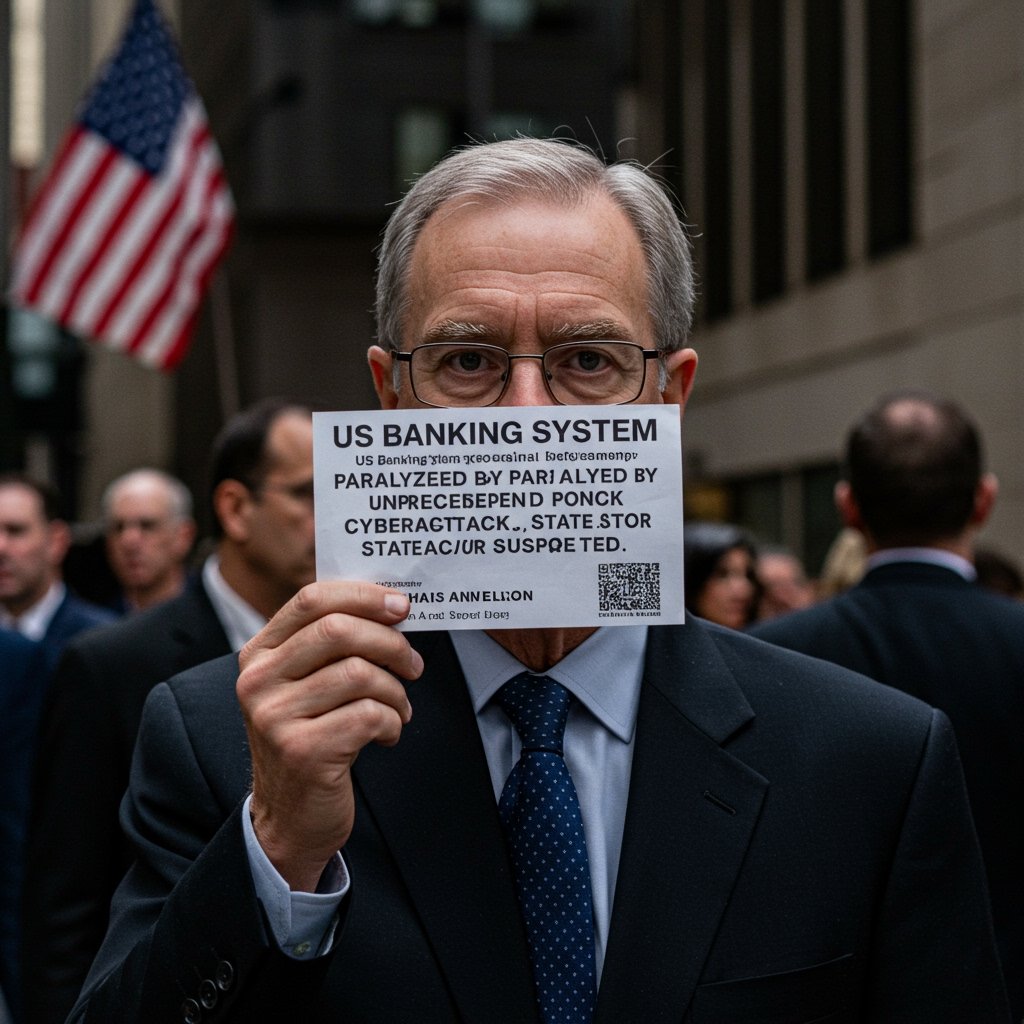Nationwide Banking Outages Spark Economic Concern
Starting in the early hours of February 22, 2025, the United States financial sector was hit by a massive and coordinated cyberattack, causing significant disruptions across major institutions. Customers nationwide reported widespread inability to access funds, execute transactions, or use online banking platforms and ATM networks. The scale of the disruption immediately signaled an incident far beyond typical technical glitches or localized issues.
Among the first and most significantly impacted institutions were banking giants Citibank and Wells Fargo. Customers of these banks, from coast to coast, found themselves locked out of their accounts, unable to make payments, withdraw cash, or even check balances. The sudden and synchronized nature of the failures across multiple major banks fueled immediate speculation about the cause, with initial reports pointing towards a sophisticated and potentially state-sponsored operation.
Official Confirmation and Scale of the Attack
The severity of the situation prompted a swift response from government agencies. The Department of Homeland Security’s Cybersecurity and Infrastructure Security Agency (CISA) quickly became the lead federal entity coordinating the response and investigation. By midday on February 22, CISA issued a public confirmation that the incidents were not isolated events but were indeed linked to a coordinated cyberattack of unprecedented scale. CISA’s assessment highlighted that the attack targeted core processing systems within the financial institutions, explaining the widespread impact on fundamental banking operations rather than just front-end websites or mobile apps.
“This is not a simple denial-of-service attack,” stated a CISA spokesperson during a press briefing. “The attackers appear to have penetrated critical infrastructure, targeting the very systems that handle transaction processing, account management, and interbank communications. The level of sophistication suggests significant resources and planning were involved.”
The impact on core processing systems means that the fundamental backbone of the banks’ operations has been compromised or disabled, leading to cascading failures that affect everything from ATM functionality to online wire transfers and point-of-sale authorizations. Business closures and significant delays in commercial transactions were immediately reported across various sectors of the economy as a direct consequence.
Investigation and Suspected Attribution
While official attribution is pending, the intelligence community has been working around the clock since the attack began. According to intelligence assessments shared privately with senior government officials and congressional leaders, the attack bears the hallmarks of a sophisticated state-sponsored group. These assessments reportedly suggest the origin is associated with a nation actively engaged in geopolitical tensions with the United States.
The specific methods used in the attack remain under wraps as the investigation is ongoing, but cybersecurity experts briefed on the situation speculate that it could involve highly advanced persistent threats (APTs), zero-day exploits, or a combination of techniques designed to bypass traditional financial sector defenses. The focus on core processing systems suggests an attacker with deep technical knowledge of financial infrastructure and the capability to execute complex, multi-stage intrusions.
Identifying a state actor is a complex process, often involving digital forensics, analysis of tactics, techniques, and procedures (TTPs) previously linked to known groups, and human intelligence. The implication of a state sponsor significantly raises the stakes, moving the incident beyond cybercrime and into the realm of national security and potential cyber warfare.
Government Response and Financial Stability Measures
The federal government has mobilized a multi-agency response, involving the Department of Homeland Security, CISA, the Federal Bureau of Investigation (FBI), the Department of the Treasury, and potentially other intelligence agencies. Coordination is paramount to not only investigate the attack and attribute it but also to assist the affected institutions in restoring services and mitigating economic fallout.
Treasury Secretary Michael Adams addressed the nation shortly after CISA’s confirmation, emphasizing the government’s top priorities. “Let me be clear,” Secretary Adams stated, “restoring services is the top priority. We understand the immense frustration and hardship this is causing for American families and businesses. The full resources of the U.S. government are being deployed to work with the affected financial institutions to bring their systems back online as quickly and safely as possible.”
Secretary Adams also confirmed that emergency measures are being implemented to ensure continued financial stability. While specific measures were not detailed immediately, these could include coordination with the Federal Reserve to ensure liquidity in the system, relaxation of certain regulatory requirements, or activation of contingency plans to facilitate essential transactions through alternative channels if possible. The Treasury Department is working closely with bank leadership and regulators to assess the integrity of financial data and prevent any loss of account information, although the primary impact appears to be on accessibility and transaction processing rather than data theft.
Economic Implications and Path Forward
The unprecedented scale of the cyberattack on core financial systems poses significant risks to the U.S. economy. Small businesses unable to process payments, individuals unable to access emergency funds, and disruptions to critical supply chains that rely on timely financial transactions could lead to cascading economic effects if the outages persist for an extended period. Economists are already warning of potential dips in consumer spending and business activity.
Cybersecurity analysts estimate that restoring core processing systems, especially after a sophisticated intrusion, is a complex undertaking that could take days, if not longer. The process involves isolating the affected systems, thoroughly eradicating any malicious code or backdoors, verifying data integrity, and safely bringing systems back online without risking re-infection. This requires careful coordination between the banks’ internal IT teams, third-party cybersecurity firms, and government agencies.
The incident highlights the critical vulnerability of modern financial infrastructure to cyber threats and underscores the need for continuous investment in cybersecurity defenses and robust resilience planning. As the investigation progresses and attribution becomes more certain, the United States government will face difficult decisions regarding potential responses to the state actor deemed responsible.
For now, the immediate focus remains on restoring functionality to the U.S. banking system and ensuring the stability of the financial markets amidst an attack described as unprecedented in its scope and impact on the nation’s economic backbone.






